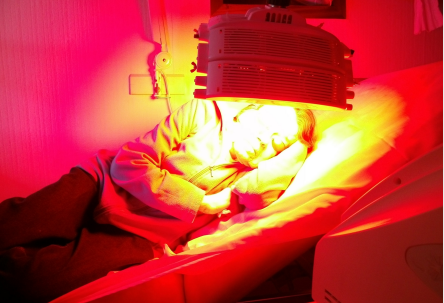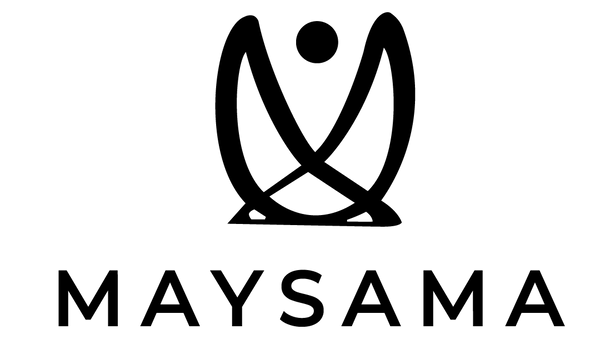
Can you Over-do Your Red Light Therapy?
Share
This is a question that I often get asked. In recent dialogue with leading photobiomodulation scientist Dr Michael Hamblin, his viewpoint was clearly that it is not possible to overdo your red light therapy.
In contrast, German scientist, Professor Andrei Sommer, and author of the science paper ‘Red Light and Green Tea – a powerful duo in skin rejuvenation’, has researched and published extensively on the impact of Reactive Oxygen Species [ROS] produced during photobiomodulation and established a theory, which indicates a ‘less is more’ approach is beneficial for optimal results.

Within clinical circles, photobiomodulation is used for both superficial and deep tissue biostimulation. Superficial applications include wound healing and skin rejuvenation, whereas deep tissue application include treating brain disorders, such as Alzheimer’s or Parkinson’s, where ATP reservoirs have been depleted.
The possibility of ‘phototoxicity’ has been explored by research scientists in relation to the use of near infrared laser to treat deeper layers of the skin. Their concern though, relates to the possible overheating of skin tissue rather than any downside from biostimulatory effects of near infrared light.
These studies use medical laser light which delivers high intensity light in the region of 1W/cm2. High intensity light is needed to treat deeper tissue applications because of the loss of light when absorbed and scattered by tissue.
Superficial treatments such as skin rejuvenation, on the other hand, lead to little loss of light intensity at the skin surface, so needs far less light intensity.

To put things into context, it is worth noting that the power of at-home red light therapy devices are a fraction of those used in medical applications, delivering in the region of 5 to 300mw/cm2. It is therefore highly unlikely that we could overdo our red light therapy treatments.
Nonetheless, it is time to shine a light on what’s happening at a cellular level when we enjoy our red light therapy treatment, so we can be sure to get the best out of it.
If you are no stranger to red light therapy, you will already be familiar with the concept that red and near infrared light have a biostimulatory action, which helps the cell to produce more cellular energy in the form of Adenosine triphosphate [ATP].
The principal mechanism relies on the activation of the mitochondria, the ‘batteries’ of our cells, which produce this energy currency.
More ATP means more energy to drive cellular processes, such as cell reproduction and migration, and in particular, an increase in the production of dermal fibroblasts, the cells responsible for collagen synthesis, which is why we love our red light therapy for its anti-aging benefits.

But does more red light always mean more ATP? Well, no, it doesn’t! At least not in a single treatment session. Let me explain.
ATP is produced by the enzyme ATP synthase. This enzyme is like a tiny motor, which operates in the fluid of our mitochondrial membrane. And, like any motor, the less resistance, the faster the motor can work.
So, here’s the crutch. The fluid in our mitochondrial membrane is water. Layers and layers of water. Simple H2O!
You thought water was water, right? But you also know that water can be steam or ice.
Well, I have news for you. In our bodies, where water exists between membranes, as it does in the mitochondrial membrane and between cells, it exists in a 4th phase, which we call structured water. This structured water or ‘sticky’ water is more viscous than normal water. In fact, it is more like treacle.
So, let’s think back to our ATP synthase, our little nanomotor, which is working its socks off to produce ATP in sticky water! There’s a whole lot of resistance which slows this motor down.

In his published paper, Aging is a Sticky Business, Andrei Sommer reports on a series of experiments undertaken by his team, which shows that when they shine a 670nm laser on an artificial ‘membrane’, it instantly reduces the viscosity of the nanoscopic water layers.
These experiments offer an explanation as to what happens in our cells when we shine red or near infrared LED light on our skin.
Red-NIR light increases ATP output and produces ROS ‘fall-out’ from mitochondrial respiration. So, mitochondria are both the source of ATP and ROS.
As ROS build up between interfacial water layers, they make the water become more viscous. And the more viscous the water becomes, the slower the ATP nanomotor operates and the less ATP is produced.

When you first introduce red LED light, the light expands these water layers, which reduces the viscosity of the water and allows the mitochondrial nanoturbine to speed up, producing more ATP.
This initial burst of free radicals produced by red light is an inherent part of its biostimulatory effect, triggering a cascade of biological signals which dictate beneficial cellular behaviour, including gene expression, cell reproduction, cell migration and protein synthesis.
But extracted exposure to red-NIR light over a treatment session of several minutes’ leads to a build-up of ROS, which then start to reverse the beneficial effects, increasing the viscosity of interfacial layers and slowing down the production of ATP.
This inhibition can be understood by considering that during longer exposure to red LED light, more ROS is produced which accumulates in the interfacial water layers [IWL] making them more viscous.
For shorter irradiation times the inhibitory effect of ROS is negligible due to the short lifetimes of ROS.

During prolonged Red Light Therapy treatment times, this instant drop in the output capacity of the ATP producing enzyme, ATP synthase, can be explained by the biphasic dose response [Arndt-Schulz rule], which exists in nature and applies to most stimuli.
Exposure to light, above a certain stimulatory level, activates cellular functions, but there is an Energy Density Threshold which, if exceeded, will result in an inhibition of cellular functions.
Clearly, there is a fine balance between having enough of a response to trigger a biological stimulus and having too much of a good thing. That said, there are instances where an excess of free radicals can be beneficial.
For the treatment of fibrosis, for example, high levels of ROS slow the proliferation of dermal fibroblasts, resulting in less scar tissue. So, for treatment of fibrosis, extended exposure to red-NIR is beneficial.
During the pandemic, Sommer and his colleagues invested resources into studying the effects of excess ROS from photobiomodulation on COVID-19 and suggest that higher light intensities and pulsed light could be used to destroy the coronavirus.

For the purposes of skin rejuvenation, however, a less is more approach is advisable. Extended exposure to red-NIR light, leads to high levels of ROS, which not only reduces the efficacy of your red LED light device but prolonged exposure will lead to oxidative stress.
If not keep in check, oxidative stress leads to protein denaturation and other oxidative stress related cellular damage, and ultimately a kind of cell suicide, called apoptosis.
Whilst we are unlikely to be concerned with cell survival rates from a short Red Light session, in an ideal world, we want to avoid the build-up of ROS and optimise the benefits of our Red Light Therapy treatment.
Independent UK beauty brand, Maysama, suggests several practical strategies for your red light treatment to buffer ROS and optimise ATP production.
1. Treatment Time
The first is DO NOT OVERDO your treatment time in a single Red Light Therapy session. For recommended treatment times, always refer to the guidance provided by the manufacturer of your red light device and do NOT exceed this.
2. Antioxidant Serum
Secondly, the use of an antioxidant serum or toner helps to buffer free radicals produced by your red light device, minimising build-up of ROS and a corresponding drop in efficiency of your device. Many broad spectrum botanical antioxidants may provide a benefit, as is supported by independent studies around green tea, green rooibos, resveratrol and guarana.
Maysama’s Green Rooibos Pressed Serum is proven to accelerate and amplify results for LED treatment, not only because it functions as a powerful antioxidant to minimise ROS accumulation, but also because of a unique biochemical action which supports mitochondria function.
Aspalathin-enriched green rooibos extract is a nutraceutical used in the pharmaceutical industry to treat diabetes. Aspalathin is a rooibos flavonoid with established blood glucose lowering properties.
Glucose is the main food source of mitochondria, better known as the ‘batteries of our cells’, responsible for producing ATP. Aspalathin-enriched green rooibos helps our mitochondria to uptake glucose more effectively, increasing the rate of mitochondrial respiration, which has a positive outcome to produce more ATP.
This action of AE-green rooibos works synergistically with your red light, which relies on mitochondrial respiration for its own mechanism of increasing ATP production.

3. Pulsed Light
Pulsed Light offers advantages over standard [continuous wave] red LED light for optimising the production of cellular energy. The action of switching ON and OFF your light source helps to mitigate build-up of ROS, extending the efficacy of your red light treatment.
So, how often should you do red light therapy?
The question of frequency is just as important as treatment time. While red light therapy is considered safe, the benefits follow the same biphasic dose response explained earlier: too little and the effect is negligible, too much and the results may plateau or even diminish. For this reason, consistency rather than intensity is key.
For skin rejuvenation, most manufacturers recommend using your device three to five times per week in sessions of around 10–20 minutes. This schedule provides enough exposure to stimulate mitochondrial activity and collagen production without overwhelming the cells with excess ROS.
Over time, as your skin health improves, you may reduce to a maintenance routine of two to three sessions per week.
For deeper tissue concerns, such as joint stiffness or muscle recovery, daily sessions can be beneficial during an acute phase, before stepping back to a few times per week once improvements are felt.
Even then, it is not about pushing the longest or most frequent sessions possible, but about maintaining a steady rhythm that gives your cells repeated opportunities to benefit from light stimulation.
Another factor is your device type. At-home LED masks and handheld panels typically emit lower power densities than clinical lasers, which makes them safe for frequent use. That said, “more is better” does not apply.
Respect the recommended usage guidelines provided by your device manufacturer. Combining moderate session length with regular repetition will almost always outperform sporadic long treatments.
It is also worth considering lifestyle. Skin cells regenerate in cycles, and collagen remodelling takes time. Skipping sessions will not undo your progress, but it may delay visible results. By making red light therapy a routine habit, much like applying skincare or exercising, you will notice improvements that build gradually and last longer.
Ultimately, the answer to how often should you do red light therapy depends on your goals, your skin or health condition, and the device you are using.
A balanced schedule of several short sessions per week, supported by antioxidant skincare and, where possible, pulsed light technology, offers the best chance to maximise results without tipping into oxidative stress.
Maysama Green Rooibos Pressed Serum is available from www.maysama.com at the retail price of $62.95 / £46.00 for 1.0 fl oz/ 30mls. Maysama ships to the USA & Canada, UK and Europe.
Shop the Edit

Maysama Green Rooibos Pressed Serum

SAVE 12% with Maysama Green Rooibos Pressed Serum Tri-pack




